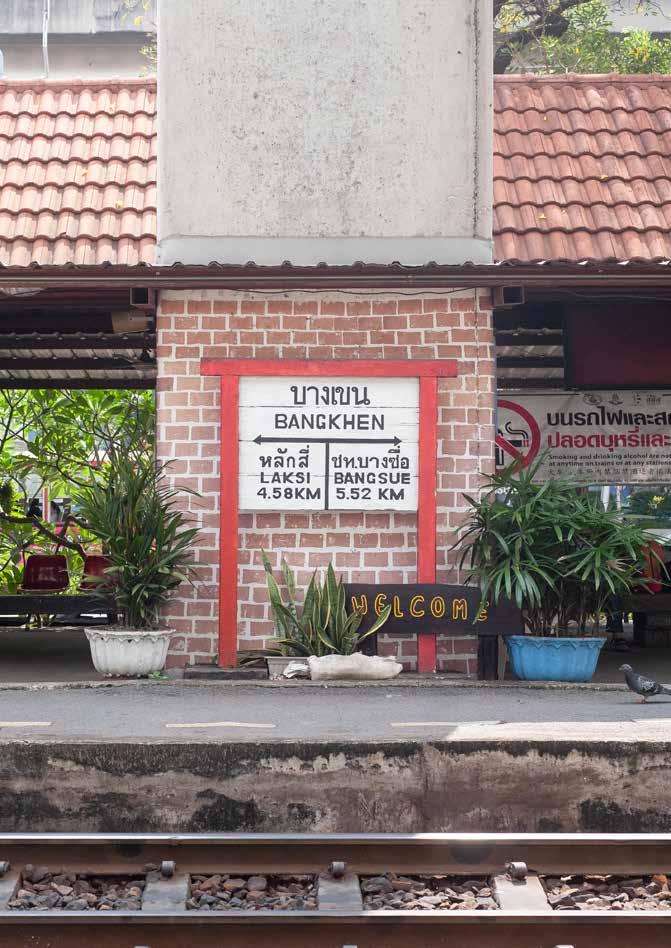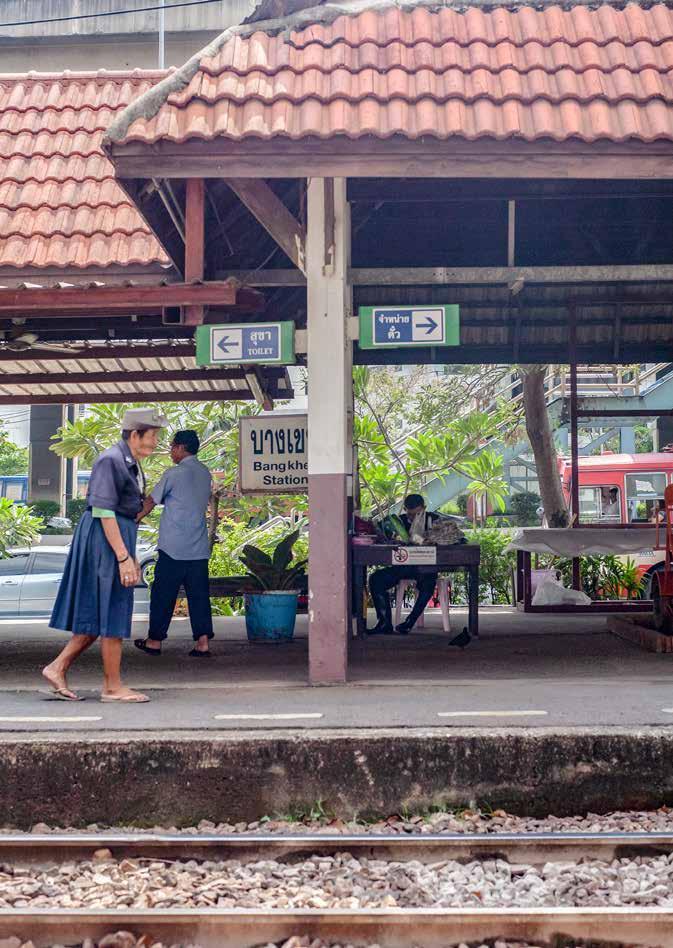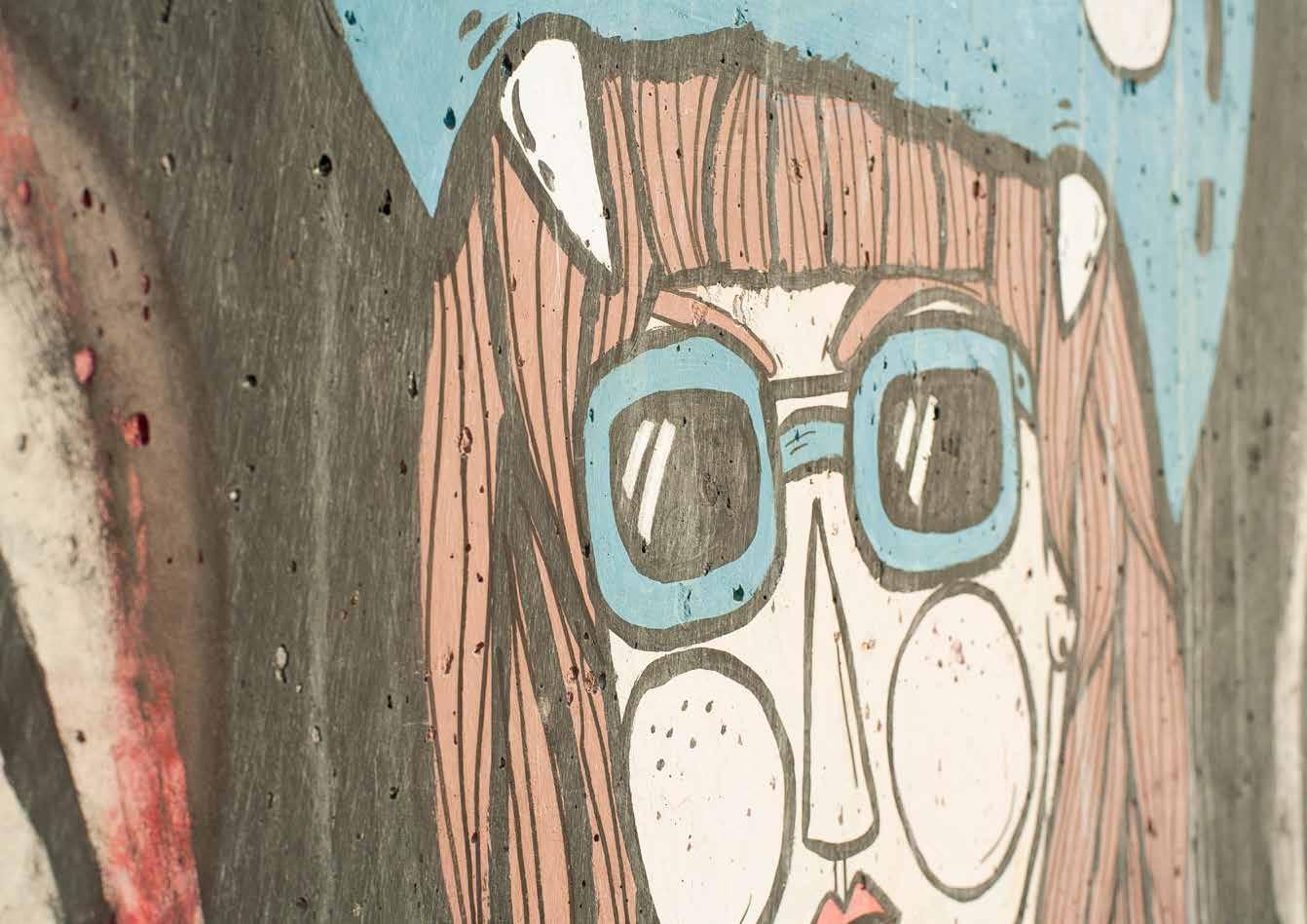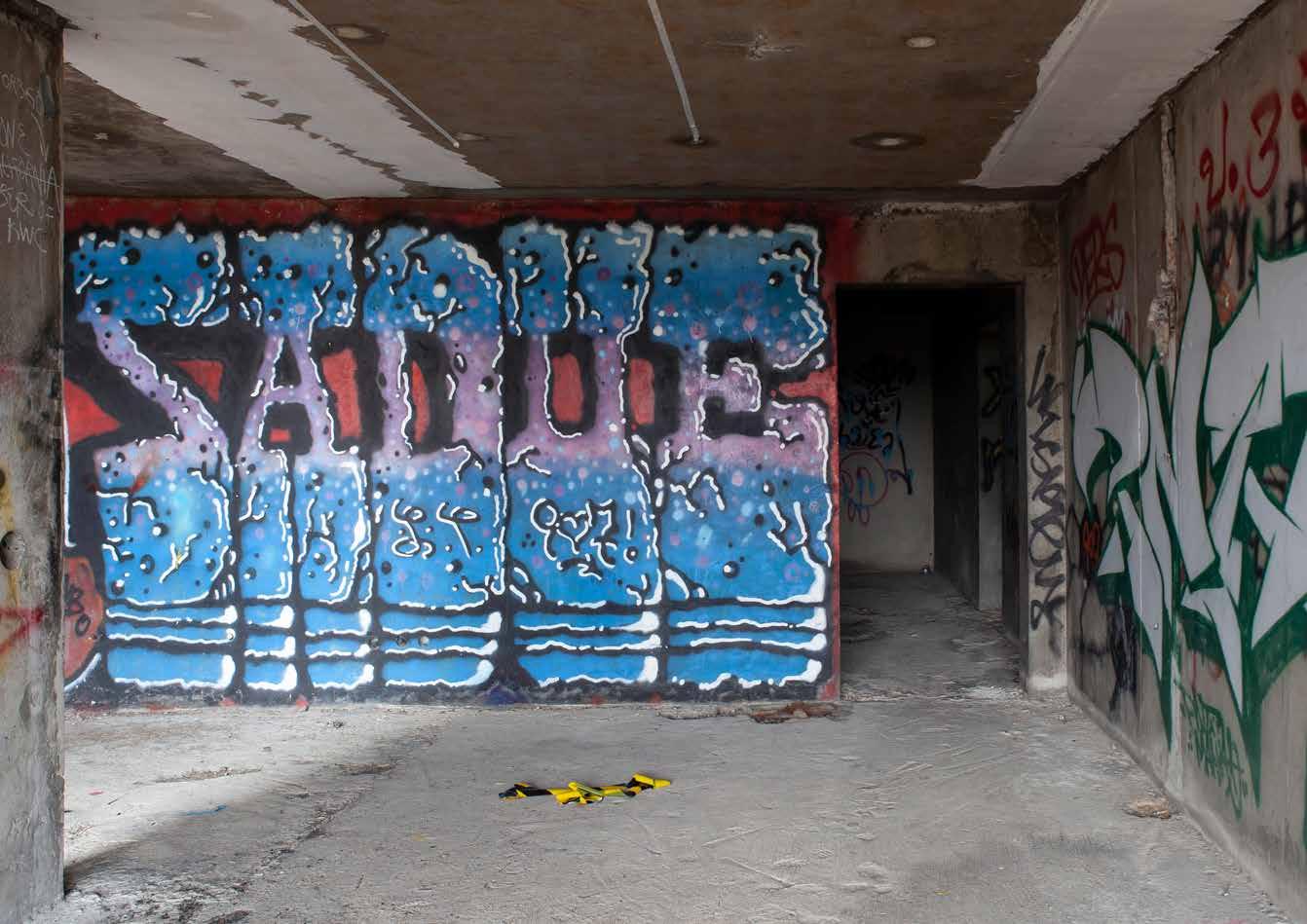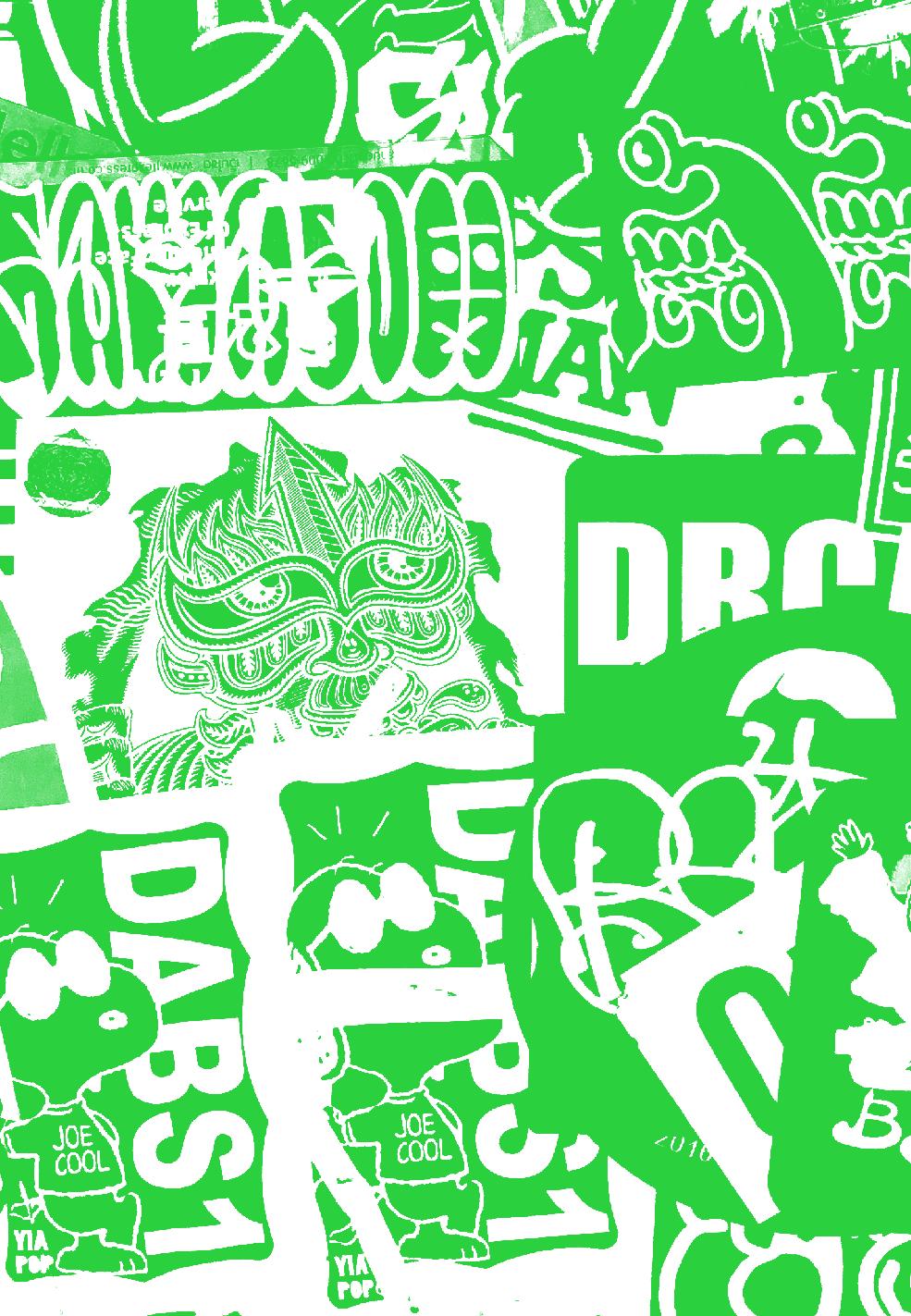












The just-completed nocturnal journey over Bangkok’s highways still tunnels out of the back of my closed eyelids. I step off the motorbike into tungsten light – glad to walk a bit. A year before, in 2013, I’d first glimpsed this place while driving with a friend out through the back lots behind Klong Prem Prison. We passed across railway tracks within a forest of tall cement columns and, momentarily aligning with their very centre, I’d looked down the line. Within a heartbeat, the hundreds of columns and their overhead beams – illuminated with a fanciful menagerie of saints and monsters – created a tunnel of ever-diminishing frames surrounding a slender pyramid formed by the tracks merging on the horizon – Hopewell (see opposite).
This night, I was back, looking for more of what I’d seen. Leaving the bike and walking along the tracks, there were no columns, no street art, just a wide void. The culprit was nearby, a crooked 60-tonne excavator hibernated by a demountable shed. In its doorway a man sat under a cone of light. I’d waited too long. My heart fell away. What I’d hoped to photograph was already gone.

Dejected, I pushed further up the line, to unlit areas of track beyond the excavator. Declarations of despair and indignation emerged from the darkness as my eyes adjusted – contorted figures in lurid hues, creeping, warped faces and fine, elegant lines. Relieved, I saw there were still many columns adorned with art in the area. Some of the pieces were new. Artists were still working here – just ahead of the diesel-driven destruction that was rolling up the line by daylight. There was still a chance to record this place and its street art before it was lost.
As the first constructed attempt at rail mass transit in Thailand, the story of the Bangkok Elevated Road and Train System (the Hopewell Project) is part of Bangkok’s urban heritage.

“Hopewell was the trace of former architecture. It had its own history.”

With the construction boom of the 1960s and ’70s, came a massive increase in the city’s population. Transport systems failed to keep up. To alleviate terrible traffic congestion, the government focussed resources on expanding the road network –this didn’t help. Belatedly, in the ’80s, planning began on several public transport projects. Approved in 1990, the first of these to break ground was Hopewell. It is reported that Gordon Wu of Hopewell Holdings was awarded the contract based only on a two-page proposal. Hopewell was to construct the combined road and railway above existing State Rail Transport lines in return for development rights along the corridor.
Originally, three lines were designed. The only one to move beyond planning was the northern section from Chatuchak to Don Mueang Airport, then Bangkok’s international airport. Construction was ten percent complete when it was halted in 1997. Rumours of mismanagement and squandered funds surrounded the project.

